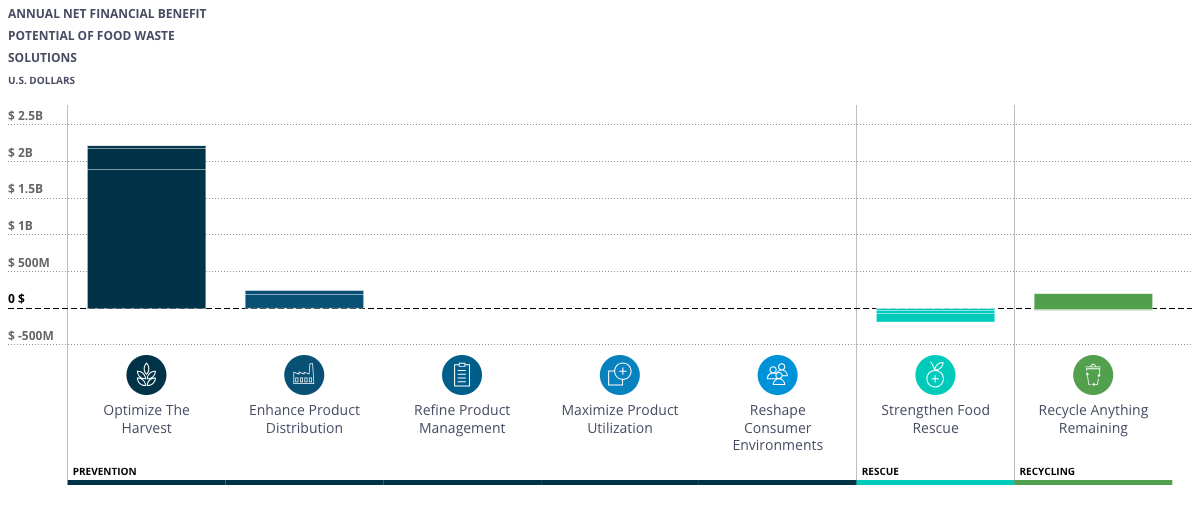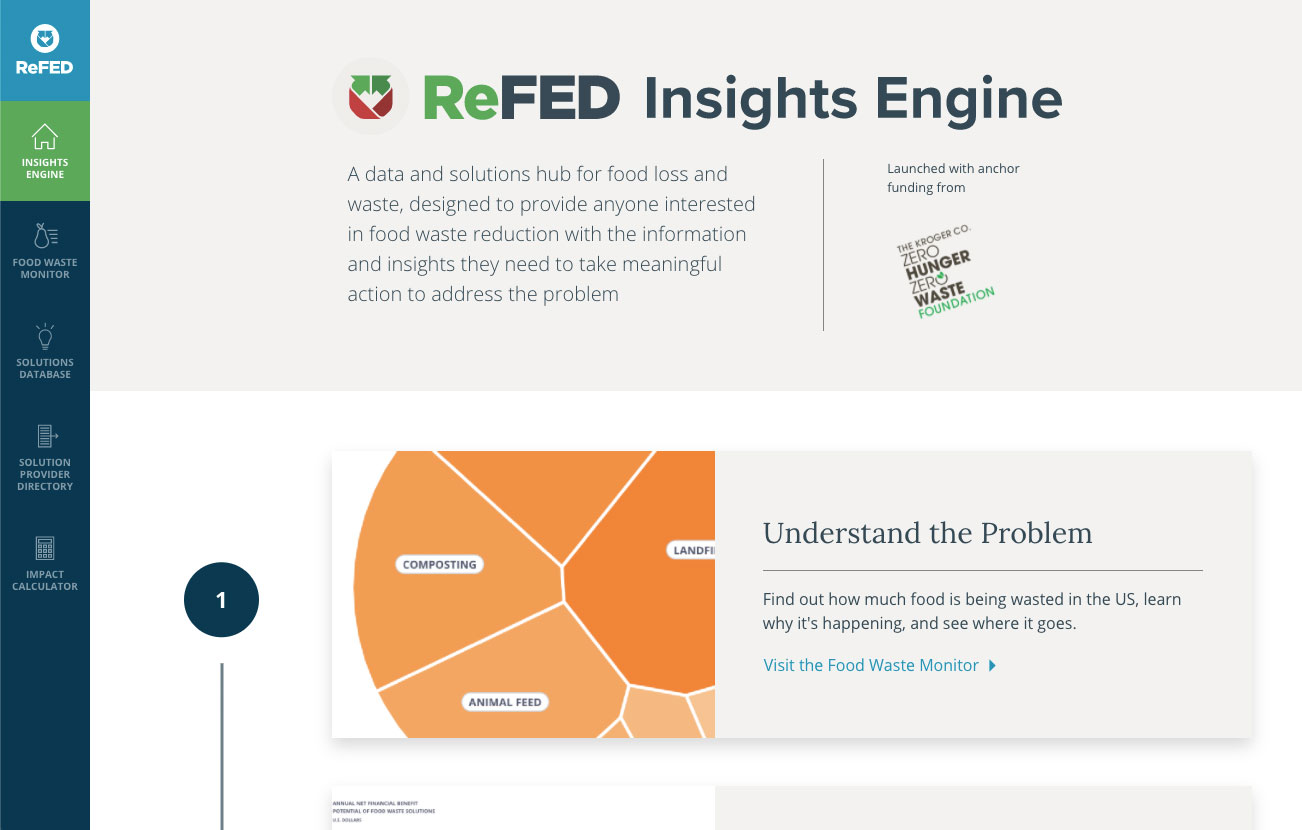Producers
Stakeholder Recommendations
Producers: Solutions for Food Waste on Farms
Stakeholder RECOMMENDATIONS
Producers
Summary
While food loss starts at the production level, it's often due to decisions and behaviors elsewhere in the supply chain. Low market prices and high labor costs often make it uneconomical for farmers to harvest all that they produce. Strict cosmetic standards result in insufficient demand for imperfect-looking produce. And despite gleaning and farm-to-food-bank efforts to recover this unharvested food, the vast majority is left in the fields and tilled under.
Food waste reduction solutions and recommendations at the farm level include producers or growers and enterprises that package agricultural or animal products at the site of production. In 2022, farming generated 14.9M tons of surplus produce, more than 80% of which was left behind in the fields and never harvested. Only 1.6% was donated for hunger relief.
As we are increasingly removed from our agricultural system, it’s important to reestablish connections from consumers all the way back to the farm where food originates. Implementing solutions and establishing best practices at the farm level can build resilience throughout the entire supply chain.
16.8%
Total Surplus Food in 2022 by Producers
14.9M Tons
Causes
Left Behind After Harvest (Inedible) - 4.31M Tons (29%)
Left Behind After Harvest (Not Marketable) - 3.88M Tons (26.8%)
Left Behind After Harvest (Marketable) - 3.31M Tons (22.2%)
Destinations
Not Harvested - 12.2M Tons (82%)
Animal Feed - 1.66M Tons (11.2%)
Dumping - 590k Tons (4%)
Explore solutions that can help Producers reduce food loss on farms.
Solutions for this sector can impact food waste generated by other sectors as well, not just waste from Producers. ReFED's impact estimates reflect Modeled Solutions only – Unmodeled Solutions and Best Practices can take these amounts even higher.

(Annual Figures)
Top Recommendations
- Identify alternative markets: Build relationships with alternative markets to diversify sales channels and find new markets for crops otherwise left in the field, such as fast growing “imperfect” product companies and online marketplace platforms.
- Propose new buyer arrangements: Propose new arrangements with buyers that 1) expand product specifications in a minimal but impactful way; 2) establish new contract types such as whole crop purchasing; and 3) lead to better upstream communication of demand, including data tools that could facilitate this.
- Establish donation channels: Build direct relationships with food recovery organizations and gleaners to have greater options to capture donatable product.
- Participate in emerging tools and efforts: Engage with existing and emerging technical tools and collaborative efforts (e.g., harvest data collection platforms, planting schedule coordination, etc.) to better align production with market demand and track harvest and yield patterns over time.
Optimize The Harvest
Key Opportunities
- Build relationships with alternative markets to diversify sales channels and find new markets for crops otherwise left in the field, such as fast growing B2C imperfect product companies and online marketplace platforms.
- Propose new arrangements with buyers that 1) expand product specifications in a minimal but impactful way; 2) establish new contract types such as whole crop purchasing; and 3) lead to better upstream communication of demand, including data tools that could facilitate this.
- Diversify farm labor sources – such as through labor matching apps, gleaning networks, and mechanization – to create alternatives that address labor shortages.
- Engage with existing and emerging technical agricultural tools and collaborative efforts (e.g., harvest data collection platforms, planting schedule coordination, etc.) to better align production with market demand and track harvest and yield patterns over time.
- Implement and expand value-added processing capabilities on or near-farm to process and profit from full harvest.
Enhance Product Distribution
Key Opportunities
- Use technology innovations to improve the flow of information – such as road and traffic conditions, as well as timing of pickup and delivery – to optimize the movement of food.
- Coordinate across the sector to develop shared economies for idle assets, such as cold storage and transportation, to expand accessibility at lower cost and resource impact.
Refine Product Management
Key Opportunities
- Establish and use aggregation centers that provide adequate storage and preservation options, such as cooling chambers, to address cold chain disruptions.
Maximize Product Utilization
Key Opportunities
- Employ active and intelligent packaging technologies that extend shelf life and reduce spoilage.
Reshape Consumer Environments
Key Opportunities
- Explore and promote food product trends that make use of farm surplus and alternative specification items, such as cauliflower rice.
- Communicate the variety of product types (size, shape, and color variety) to consumers through in-person, virtual, and written engagement opportunities.
Strengthen Food Rescue
Key Opportunities
- Participate in pilots of real and near-time data sharing technology that are informed by the type, quantity, condition, location, etc. of products nearing expiration to address time-sensitive food rescue opportunities.
- Build direct relationships with food recovery organizations and gleaners to have greater options to capture donatable product in the moment it’s available.
- Ensure grower and staff knowledge of liability protections for direct donation.
Recycle Anything Remaining
Key Opportunities
- Ensure packhouse culls are sent to highest use, exploring alternative markets and upcycled products first, then livestock feed, and finally anaerobic digestion or composting.
Your Source for Data and Solutions:
ReFED's Insights Engine
The Insights Engine is an online hub for data and insights about food waste built from more than 50 public and proprietary datasets, plus estimates and information from academic studies, industry papers, case studies, and expert interviews; a detailed financial analysis of more than 40 food waste reduction solutions; a directory of organizations ready to partner on food waste reduction initiatives; and more. With more granular data, more extensive analyses, more customized views, and the most up-to-date information, the Insights Engine can provide anyone interested in food waste reduction with the information they need to take meaningful action.


ReFED offers a range of solutions for organizations to advance their own food waste initiatives. Our interactive tools, reports and strategic solutions can help your team get started.
